Table of Contents
Rivers of India India is blessed with a network of majestic rivers that weave through its vast and diverse landscape. These rivers, such as the Ganges, Yamuna, Brahmaputra, and Godavari, hold significant cultural, historical, and ecological importance. The Ganges, considered sacred by millions, flows through the northern plains and provides sustenance to a multitude of communities.
The Brahmaputra, originating in the Himalayas, traverses the northeastern region, showcasing breathtaking vistas along its course. The Godavari, winding its way through central India, supports agricultural activities and sustains a rich biodiversity. These rivers not only serve as lifelines for countless settlements but also harbor diverse ecosystems, including rare and endangered species.
List of Rivers of India
India is home to a vast network of rivers that crisscross the entire country. Here is a list of some prominent rivers in India:
| S No. | Rivers | Length | Origin | End |
| 1 | Indus | 2,900km | comes from the Tibetan plateau and enters India through J&K |
Merges into the Arabian Sea near Sindh
|
| 2 | Brahmaputra | 2,900km | Arunachal Pradesh is where the Himalayan Glacier enters India from Tibet |
Merges with Ganga and ends in the Bay of Bengal
|
| 3 | Ganga | 2,510km | Uttarakhand’s Gangotri Glacier (Bhagirath) | Bay of Bengal |
| 4 | Godavari | 1,450km | begins in Maharashtra and travels across 7 states in India |
Ends in the Bay of Bengal
|
| 5 | Narmada | 1,290km | beginning in Amarkantak, Madhya Pradesh |
Drains into the Arabian Sea via the Gulf of Cambay
|
| 6 | Krishna | 1,290km | originates in Maharashtra’s Western Ghats, close to Mahabaleshwar |
Ends in the Bay of Bengal near Andhra Pradesh
|
| 7 | Mahanadi | 890km | was originated in Dhamtri, Chhattisgarh |
Ends in the Bay of Bengal in Odisha
|
| 8 | Kaveri | 760km | Talakaveri in the Karnataka Western Ghats |
Ends in the Bay of Bengal.
|
These are just a few examples of the many rivers that grace the Indian subcontinent, each with its own unique characteristics, cultural significance, and ecological importance.
Major Rivers of India
India is a land of rivers, with over 4,000 rivers across the country. However, seven of these rivers are considered the most important. These major rivers are crucial for India’s economic and social development. They provide water for farming, drinking, and transportation.
These rivers also help generate hydroelectric power and support various industries. Many temples and shrines are located along their banks, and they are considered sacred by Hindus. The seven major rivers are the Indus, Brahmaputra, Ganga, Narmada, Tapi, Godavari, and Krishna.
- The Indus River is the Longest River in India, with a length of over 3,180 kilometers. It originates in the Tibetan Plateau and flows through Pakistan and India before emptying into the Arabian Sea. The Indus River is an important source of water for irrigation and drinking water for millions of people in India and Pakistan.
- The Brahmaputra River is the second-longest river in India, with a length of over 2,900 kilometers. It originates in the Himalayas and flows through China, India, and Bangladesh before emptying into the Bay of Bengal. The Brahmaputra River is a major transportation route and a source of hydroelectric power.
- The Ganga River is the third-longest river in India, with a length of over 2,500 kilometers. It originates in the Himalayas and flows through the northern states of India before emptying into the Bay of Bengal. The Ganga River is considered to be sacred by Hindus and is a major source of water for irrigation and drinking water.
- The Narmada River is the fourth-longest river in India, with a length of over 1,300 kilometers. It originates in the Satpura Range in central India and flows through the states of Madhya Pradesh, Gujarat, and Maharashtra before emptying into the Arabian Sea. The Narmada River is a major source of water for irrigation and hydroelectric power.
- The Tapi River is the fifth-longest river in India, with a length of over 700 kilometers. It originates in the Satpura Range in central India and flows through the states of Madhya Pradesh, Maharashtra, and Gujarat before emptying into the Arabian Sea. The Tapi River is a major source of water for irrigation and drinking water.
- The Godavari River is the sixth-longest river in India, with a length of over 1,400 kilometers. It originates in the Western Ghats in central India and flows through the states of Maharashtra, Telangana, Andhra Pradesh, and Odisha before emptying into the Bay of Bengal. The Godavari River is a major source of water for irrigation and drinking water.
- The Krishna River is the seventh-longest river in India, with a length of over 1,400 kilometers. It originates in the Western Ghats in Karnataka and flows through the states of Karnataka, Telangana, Andhra Pradesh, and Maharashtra before emptying into the Bay of Bengal. The Krishna River is a major source of water for irrigation and drinking water.
Rivers of India Map
The rivers of India can be divided into two major systems: the Himalayan Rivers and the Peninsular Rivers.
- The Himalayan rivers are the longer and more voluminous rivers of India. They originate in the Himalayas and flow through the northern and northeastern states of India. The major Himalayan rivers are:
- Ganges River: The Ganges is the longest river in India and one of the most sacred rivers in the world. It originates in the Himalayas and flows through the states of Uttarakhand, Uttar Pradesh, Bihar, Jharkhand, and West Bengal.

- Yamuna River: The Yamuna is the largest tributary of the Ganges River. It originates in the Himalayas and flows through the states of Uttarakhand, Uttar Pradesh, Haryana, and Delhi.
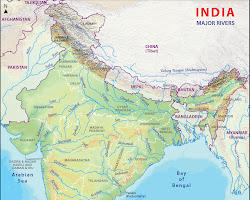
- Indus River: The Indus is the third longest river in India. It originates in the Himalayas and flows through the states of Jammu and Kashmir, Himachal Pradesh, Punjab, Haryana, and Rajasthan.

- Brahmaputra River: The Brahmaputra is the fourth longest river in India. It originates in the Himalayas and flows through the states of Arunachal Pradesh, Assam, Nagaland, Manipur, and Meghalaya.

- Chenab River: The Chenab is a tributary of the Indus River. It originates in the Himalayas and flows through the states of Jammu and Kashmir, Himachal Pradesh, and Punjab.
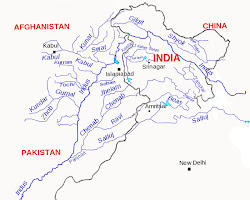
- Ravi River: The Ravi is a tributary of the Indus River. It originates in the Himalayas and flows through the states of Himachal Pradesh and Punjab.

- Sutlej River: The Sutlej is a tributary of the Indus River. It originates in the Himalayas and flows through the states of Himachal Pradesh, Punjab, and Haryana.
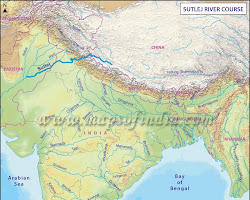
2. The Peninsular rivers are shorter and carry less water than the Himalayan rivers. They start in the Western Ghats and the Eastern Ghats and flow through the southern states of India. The main Peninsular rivers include:
- Godavari River: The Godavari is the longest river in South India. It originates in the Western Ghats and flows through the states of Maharashtra, Telangana, Andhra Pradesh, and Odisha.

- Krishna River: The Krishna is the fourth longest river in India. It originates in the Western Ghats and flows through the states of Maharashtra, Karnataka, Telangana, and Andhra Pradesh.

- Kaveri River: The Kaveri is the second longest river in South India. It originates in the Western Ghats and flows through the states of Karnataka, Tamil Nadu, and Kerala.
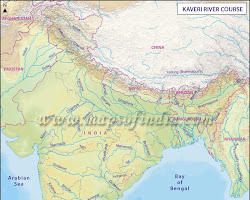
- Mahanadi River: The Mahanadi is the sixth-longest river in India. It originates in the Eastern Ghats and flows through the states of Chhattisgarh, Odisha, and Andhra Pradesh.
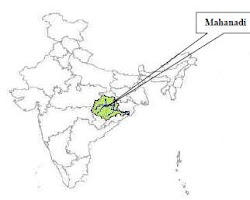
- Narmada River: The Narmada is the fifth longest river in India. It originates in the Satpura Range and flows through the states of Madhya Pradesh and Gujarat.

- Tapi River: The Tapi is a tributary of the Narmada River. It originates in the Satpura Range and flows through the states of Madhya Pradesh and Gujarat.

Important Rivers in India
- Ganges River: The Ganges is the longest river in India and one of the most sacred rivers in the world. It originates in the Himalayas and flows through the states of Uttarakhand, Uttar Pradesh, Bihar, Jharkhand, and West Bengal. The Ganges is a major source of water for irrigation, drinking, and industry. It is also home to a variety of plants and animals.
- Yamuna River: The Yamuna is the largest tributary of the Ganges River. It originates in the Himalayas and flows through the states of Uttarakhand, Uttar Pradesh, Haryana, and Delhi. The Yamuna is a major source of water for irrigation and drinking. It is also home to a variety of plants and animals.
- Indus River: The Indus is the third longest river in India. It originates in the Himalayas and flows through the states of Jammu and Kashmir, Himachal Pradesh, Punjab, Haryana, and Rajasthan. The Indus is a major source of water for irrigation and drinking. It is also home to a variety of plants and animals.
- Godavari River: The Godavari is the longest river in South India. It originates in the Western Ghats and flows through the states of Maharashtra, Telangana, Andhra Pradesh, and Odisha. The Godavari is a major source of water for irrigation, drinking, and industry. It is also home to a variety of plants and animals.
- Brahmaputra River: The Brahmaputra is the fourth longest river in India. It originates in the Himalayas and flows through the states of Arunachal Pradesh, Assam, Nagaland, Manipur, and Meghalaya. The Brahmaputra is a major source of water for irrigation, drinking, and industry. It is also home to a variety of plants and animals.
- Krishna River: The Krishna is the fourth longest river in India. It originates in the Western Ghats and flows through the states of Maharashtra, Karnataka, Telangana, and Andhra Pradesh. The Krishna is a major source of water for irrigation, drinking, and industry. It is also home to a variety of plants and animals.
- Mahanadi River: The Mahanadi is the sixth-longest river in India. It originates in the Eastern Ghats and flows through the states of Chhattisgarh, Odisha, and Andhra Pradesh. The Mahanadi is a major source of water for irrigation, drinking, and industry. It is also home to a variety of plants and animals.
Major River Systems in India
Major River Systems in India – Indus River
- The Indus originates near Lake Mansarovar in Tibet’s Kailash range.
- It has numerous tributaries in India and Pakistan; stretches about 2897 km.
- Around 700 km of its course is in India; it reaches Karachi in the Arabian Sea.
- It enters India through Jammu and Kashmir, creating a scenic gorge.
- In Kashmir, it merges with tributaries: Zaskar, Shyok, Nubra, and Hunza.
- It flows amidst Ladakh Range and Zaskar Range near Leh.
- Crossing the Himalayas, a 5181 m deep gorge near Attock is crossed.
- Major Indian tributaries: Jhelum, Ravi, Chenab, Beas, Sutlej.
Major River Systems in India – Brahmaputra River
- The Brahmaputra originates from Mansarovar Lake, shared with Indus and Sutlej.
- Its length is 3848 km, slightly surpassing the Indus.
- A major part of its course is outside India.
- Flows parallel to the Himalayas, take a U-turn at Namcha Barwa.
- Enters India as the Dihang River in Arunachal Pradesh.
- Travels through Arunachal Pradesh and Assam, with many tributaries.
- Assam sees a braided channel, heavy rainfall swells the river.
- Named Tsangpo in Tibet, carries less water there.
- In India, significant water and silt are due to heavy precipitation.
- Among India’s largest rivers in volume; triggers disasters in Assam, Bangladesh.
Major River Systems in India – Ganga River
- The Ganga originates as the Bhagirathi from the Gangotri glacier.
- Before it reaches Devprayag in the Garhwal Division, the Mandakini, Pindar, Dhauliganga and Bishenganga rivers merge into the Alaknanda, and the Bheling drain into the Bhagirathi.
- The Pindar River rises from East Trishul and Nanda Devi unites with the Alaknanda at Karan Prayag. The Mandakini meets at Rudraprayag.
- The water from both Bhagirathi and the Alaknanda flows in the name of the Ganga at Devprayag.
- The principal tributaries of the Ganga are Yamuna, Damodar, Sapta Kosi, Ram Ganga, Gomati, Ghaghara, and Son.
- The river after traveling a distance of 2525 km from its source meets the Bay of Bengal.
The concept of Panch Prayag
- Vishnuprayag: where the river Alaknanda meets river Dhauli Ganga
- Nandprayag: where river Alaknanda meets river Nandakini
- Karnaprayag: where river Alaknanda meets river Pinder
- Rudraprayag: where river Alaknanda meets river Mandakini
- Devprayag: where river Alaknanda meets river Bhagirathi -GANGA
Major River Systems in India – Yamuna River
- Yamuna River: Ganga’s largest tributary.
- Origin: Yamunotri Glacier, Bandarpoonch Peak, Uttarakhand.
- Key Tributaries: Sin, Hindon, Betwa, Ken, Chambal.
- Tons River: Yamuna’s largest tributary.
- Catchment Area: Extends across Delhi, Himachal Pradesh, Uttar Pradesh, Haryana, Rajasthan, and Madhya Pradesh.
Major River Systems in India – Narmada River
- Narmada River: Central India.
- Origin: Amarkantak Hill, Madhya Pradesh.
- Marks North-South India border.
- Key Peninsular River: Narmada, Tapti, and Mahi flow east to west.
- Passes through: Madhya Pradesh, Gujarat, Maharashtra.
- Empties into: Arabian Sea, Bharuch district, Gujarat.
Major River Systems in India – Tapi River
- Central Indian River; vital in peninsular India, flowing east to west.
- Origin: Eastern Satpura Range, southern Madhya Pradesh.
- Flows westward, passing historic places like Nimar, East Vidarbha, and Khandesh.
- Drains into the Gulf of Cambay, Arabian Sea.
- Tapi River Basin mainly in eastern and northern Maharashtra districts.
- Also covers parts of Madhya Pradesh and Gujarat.
- Key tributaries: Waghur, Aner, Girna, Purna, Panzara, and Bori rivers.
Major River Systems in India – Godavari River
- Godavari River: India’s second-longest with brownish water.
- Known as Dakshin (South) Ganga, Vriddh (Old) Ganga.
- Seasonal river dries in summers and widens during monsoons.
- Origin: Trimbakeshwar near Nasik, Maharashtra.
- Flows southeast through Madhya Pradesh, Telangana, Andhra Pradesh, and Orissa.
- Empties into the Bay of Bengal, form a fertile delta at Rajahmundry.
- Banked by pilgrimage sites: Nasik (MH), Bhadrachalam (TS), Trimbak.
- Tributaries: Pranahita, Indravati, Bindusara, Sabari, Manjira.
- Houses Asia’s largest rail-cum-road bridge linking Kovvur and Rajahmundry.
Major River Systems in India – Krishna River
- Krishna River: Among India’s longest, originates in Mahabaleshwar, Maharashtra.
- Flows through Sangli, and empties into the Bay of Bengal.
- Passes through Maharashtra, Karnataka, Telangana, Andhra Pradesh.
- Main tributary: Tungabhadra River, formed by Tunga and Bhadra rivers from the Western Ghats.
- Other tributaries: Dudhganga, Koyna, Bhima, Mallaprabha, Dindi, Ghataprabha, Warna, Yerla, Musi.
Major River Systems in India – Kaveri River
- Origin: Talakaveri, Western Ghats.
- Notable pilgrimage and tourist site in Kodagu, Karnataka.
- Flows through Karnataka and Tamil Nadu.
- Empties into the Bay of Bengal.
- Vital for irrigation, supporting ancient kingdoms and modern cities in South India.
- Key tributaries: Arkavathy, Shimsha, Hemavati, Kapila, Shimsha, Honnuhole, Amaravati, Lakshmana Kabini, Lokapavani, Bhavani, Noyyal, Tirtha.
Major River Systems in India – Mahanadi River
- The Mahanadi originates from the Satpura Range of central India and it is a river in eastern India.
- It flows east to the Bay of Bengal. The river drains the state of Maharashtra, Chhattisgarh, Jharkhand, and Orissa.
- The largest dam, the Hirakud Dam is built on the river.
| Relatable Articles | |
| Emergency in India | Centre State Relations |
| Special Provisions Act | Cooperative Societies |

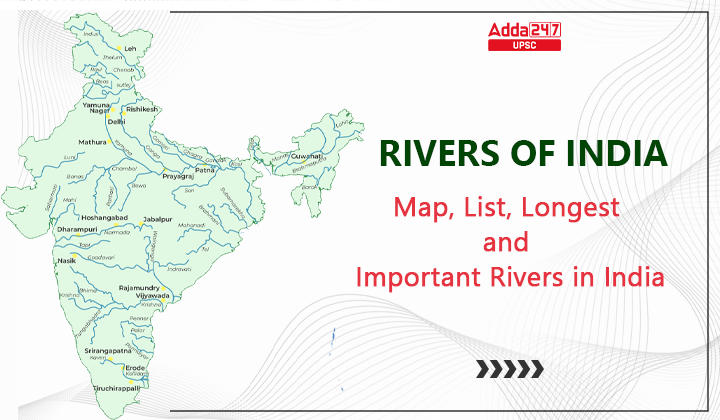

 TSPSC Group 1 Question Paper 2024, Downl...
TSPSC Group 1 Question Paper 2024, Downl...
 TSPSC Group 1 Answer key 2024 Out, Downl...
TSPSC Group 1 Answer key 2024 Out, Downl...
 UPSC Prelims 2024 Question Paper, Downlo...
UPSC Prelims 2024 Question Paper, Downlo...
